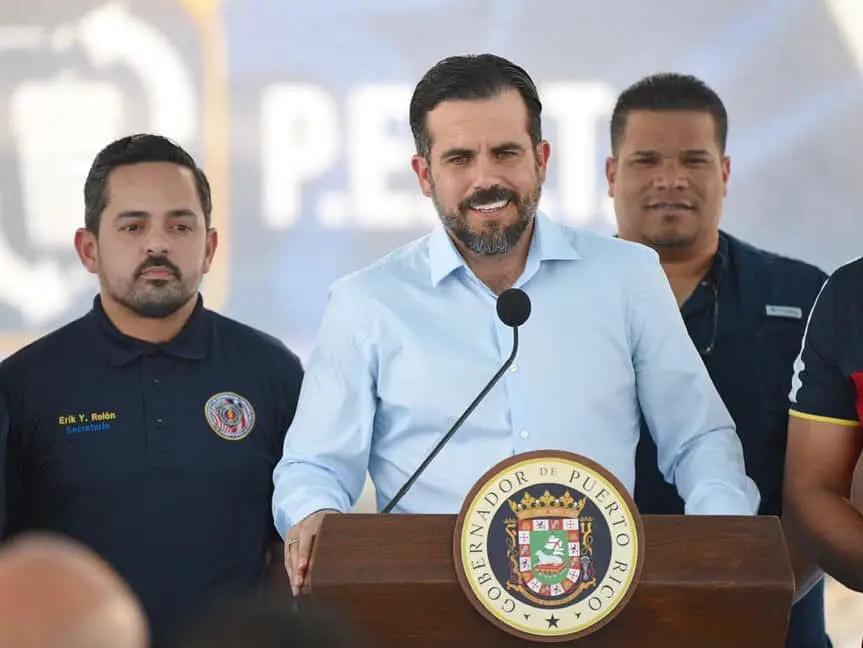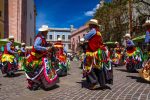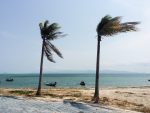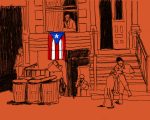On July 22, an estimated half a million Puerto Ricans marched down the streets of San Juan to demand the resignation of the island’s governor, Ricardo Rosselló, with the words “Ricky Renuncia” as their chant.
The strike was preceded by thousands of protesters in the streets each day following a leak of almost 900 pages of private text messages between Rosselló and his government advisors. The texts were filled with obscene remarks about women, members of the LGBTQ+ community and victims of Hurricane Maria, which devastated Puerto Rico nearly two years ago.
The messages were released when Rosselló had been on particularly shaky ground, after two former high-ranking officials in his administration were arrested and charged with corruption for redirecting $15.1 million in federal contracts to well-connected consultants.
The leaked messages portrayed the need for resignation, and, for most Puerto Ricans, they were the breaking point. Ricardo Rosselló has faced much criticism over the past two years surrounding the government’s response to Hurricane Maria and his involvement and complacency within a corrupt system.
The island government’s response to Hurricane Maria revealed the exploitation of its people and drastically increased poverty levels. It also highlighted the damage done previously by Puerto Rico’s own government and the U.S. federal government.
Though Puerto Rico has long suffered from mismanagement of funds, the economy ultimately capsized in 2006 when the Internal Revenue Service eliminated the last of many declining tax incentives for U.S. companies on the island. When the big companies left, taking jobs with them, the government sold bonds to pay the expenses while its debt simultaneously increased.
In 2016, after Puerto Rico had been in a state of recession for over a decade, former President Obama signed the Puerto Rico Oversight, Management and Economic Stability Act (PROMESA) into effect to manage the growing debt through a federal oversight board.
Though the bill was intended to help restructure systems and aid the island’s declining economy, it instead led to even further economic disaster for its 3.4 million inhabitants (of which 44% live below the poverty line, 11% are unemployed and 10% have left the country within the past 10 years).
The PROMESA board drastically increased water and electricity rates, closed 179 public schools and called for a $450 million cut to a public university with 70,000 students. It also proposed ending pensions for new workers and cutting existing benefits by an average of 10%.
By May of 2017, five months after Ricardo Rosselló assumed office, Puerto Rico’s debt had grown to $70 billion, and the island filed for bankruptcy. However, President Trump repeated that the federal government would not “bail out” Puerto Rico, just as he had said in his campaign.
In September, Hurricane Maria hit. With the economy in crisis and the island’s tense history surrounding the federal government, the world looked to Ricardo Rosselló and his officials to assist the people of Puerto Rico.
However, it was the people themselves that restored both the infrastructure of the island and the spirits of everyone involved. Rosselló and his officials spent the aftermath of the storm in air-conditioned government buildings. Meanwhile, the rest of the population struggled to survive with the little government aid they were provided, and most were deprived of food, water and shelter.
Even now, nearly two years later, Puerto Rico is still struggling to recover. Although the power has been restored, the island has yet to complete its full rehabilitation. Many stores and shopping centers still have not reopened, and tourist resorts are racing to finish their repairs.
Meanwhile, federal aid has been either too little or nonexistent, whether it is for homeowners, renters or businesses. This, in part, is because of the complete mismanagement of allocated funds by the Federal Emergency Management Agency (FEMA), which contracted at least 10 bidders for large amounts of work, despite them having little or no track record of disaster relief.
This report followed two previous mishaps in which FEMA contracted unreliable sources to provide food and tarps for the people, of which only partial and insufficient quantities were delivered.
Beyond the tangible damage of Puerto Rico, its people face a lifelong battle against their trauma inflicted by the devastation of the storm. There were 254 suicides in 2017 — a 28% increase from the previous year. In addition, levels of mental illness, homelessness and drug abuse have increased since Hurricane Maria. A mental health survey found that 15% of those with a mental illness simultaneously struggled with addiction.
Despite the agony that consumed Puerto Rico, Ricardo Rosselló delivered a grotesque understatement in response to the crisis. He marked the total post-Maria death toll as 64, following original statements claiming it had been a mere 16. It wasn’t until months later that he revised the number to 2,975. However, when Harvard released a study in 2018 that estimated the death toll as well over 4,000, and possibly up to 8,000, contempt for Rosselló increased.
The criticism that led Ricardo Rosselló to this revision suggests that the reason he was eager to downplay the calamity of the situation was to be in the good favor of President Trump. The President had a disrespectful attitude when he visited the island, and he repeatedly caused congressional delays in sending billions of dollars in disaster relief to communities not only in Puerto Rico, but all over the country.
This superficial behavior in his early governance warranted the Puerto Rican people’s mistrust of Rosselló. Thus, the people weren’t surprised when his former cabinet members were arrested for heinous and contemptuous corruption. The only way for Ricardo Rosselló to finally stand by Puerto Rico was to give the people what they demanded: his resignation. Sure enough, on July 24, he announced he would be stepping down, most likely to avoid the impeachment process that had already begun. His resignation is effective on August 2.
















